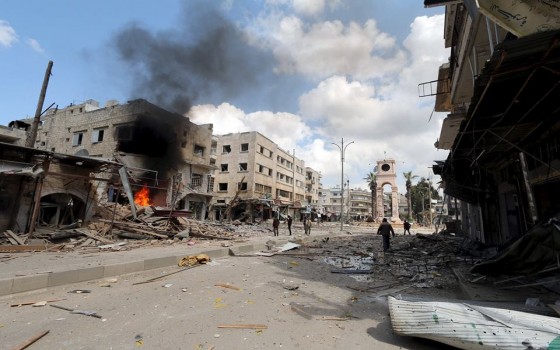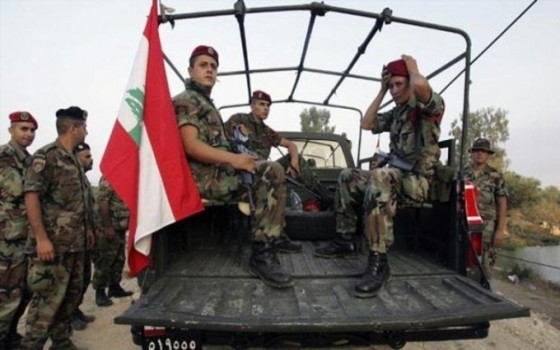Poverty, hunger, killing, displacement and human rights violations are the headlines coming from Arab countries since the West tried to impose a democratic system from abroad.

- Europe and Arabs
- Tuesday , 20 August 2024 4:28 AM GMT
Capitals: Europe and the Arabs
For more than two decades now, the countries of the Middle East and North Africa region, or Arab countries in general, have been at the forefront of news with titles related to killing, displacement, hunger, poverty, and human rights violations in various forms.
It started with Iraq and the West's pledges to build a democratic system, and then the so-called Arab Spring or the American plan to spread democracy and help Arab countries. The result was what we see in Yemen, Syria, Tunisia, Sudan, Libya, and others, and finally what Lebanon witnessed, then the Palestinian territories. The question is, what did the international community do? International reports criticize, condemn, warn, and sound the alarm, but nothing has changed.
At least 77 million children - 1 in 3 children - in the Middle East and North Africa region suffer from some form of malnutrition, according to a new report published by the United Nations Children's Fund (UNICEF) in Amman.
The report concluded that 55 million children in the region are overweight or obese, with these forms of malnutrition on the rise among school-age children in all twenty countries in the region. The report indicated that another 24 million children suffer from malnutrition, including stunting, wasting and thinness.
"A shocking statistic"
UNICEF Regional Director for the Middle East and North Africa, Adele Khodr, said that the Middle East and North Africa region is facing "an increasingly complex triple burden of malnutrition that undermines the growth, development and future potential of its children."
She added that only a third of young children get the nutritious foods they need to grow, develop and thrive. She continued, saying: "This is a shocking statistic in 2024 and risks getting worse as conflicts, crises and other challenges continue in our region."
UNICEF explained that the malnutrition crisis in the region is exacerbated by what and how children eat, poor access to nutritious foods, clean water, medical care and other basic services, and the prevalence of cheap, unhealthy foods rich in salt, sugar and fat.
The crisis, according to the organization, is occurring against a complex backdrop of ongoing conflict, political instability, climate shocks and rising food prices, which together deprive children of their right to nutritious food and limit humanitarian access to vulnerable communities.
The need for a tailored response
From crises caused by conflict, hunger and child wasting in Sudan and Yemen, to the double burdens of child stunting and overweight in Egypt or Libya, each unique context requires a tailored response that focuses on the forms of malnutrition in that context and their underlying causes, according to UNICEF.
Many of the same challenges affect women of reproductive age, with 9 million women – 5 per cent of women in the Middle East and North Africa – underweight, and 114 million – 68 per cent – overweight or obese. In 17 countries in the region, the prevalence of overweight and obesity among adult women exceeds 60 per cent, well above the global average of 45 per cent. The United Nations Office for the Coordination of Humanitarian Affairs (OCHA) warned that the catastrophic humanitarian situation in Gaza is deteriorating due to repeated waves of displacement, overcrowding, insecurity, collapsing infrastructure, ongoing hostilities and limited services.
According to humanitarian workers in Gaza, the latest Israeli evacuation order issued on Saturday affected some 13,500 displaced people in 18 locations. They said the order included the entire Maghazi camp area and several other neighborhoods in Deir al-Balah.
OCHA warned that the ongoing hostilities, evacuation orders and severe shortages of essential supplies are making it increasingly difficult for displaced families to access basic services in the locations they arrive at.
Since October, 86% of the Gaza Strip has been under evacuation orders. Most of Gaza’s population is increasingly concentrated in an area designated by the Israeli authorities in Al-Mawasi. According to OCHA, the population density in this area has increased to between 33,000 and 34,000 people per square kilometer, compared to about 200 people before October. On the health front, UN spokesman Stephane Dujarric said in his daily press conference that the severe fuel shortage is forcing hospitals to postpone essential surgeries and threatens to stop ambulances, especially in northern Gaza.
In another country, the UN Office for the Coordination of Humanitarian Affairs said it had received assurances that Sudanese authorities had agreed to transport 131 trucks loaded with food and non-food items across the border from Chad via the Adre crossing, which will meet the needs of hundreds of thousands of people during and after the peak of the rainy season, as well as the dry season in August and September.
The office also sounded the alarm about the devastating impact of heavy rains and flooding across Sudan, noting that more than a quarter of a million people, or about 258,000 people in 13 of Sudan’s 18 states, have been affected since the start of the rainy season in June, including nearly 119,000 people displaced by flooding.
He also warned that the rains were wreaking havoc on displacement sites, including Abu Shouk camp and Zamzam camp, where famine conditions were confirmed earlier this month. Both camps are located near El Fasher, the capital of North Darfur state.
The floods are increasing the risk of disease outbreaks, OCHA said, adding that cholera cases have begun to rise in recent weeks, with hundreds of cases reported.
He explained that nearly 12 states in Sudan are facing multiple disease outbreaks at the same time, while three-quarters of health care facilities in the most affected areas are no longer functioning














No Comments Found